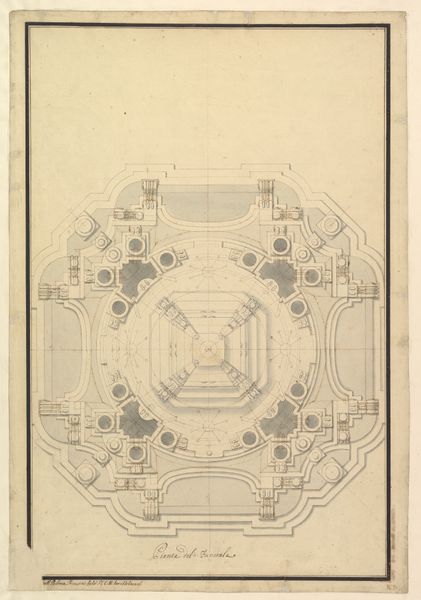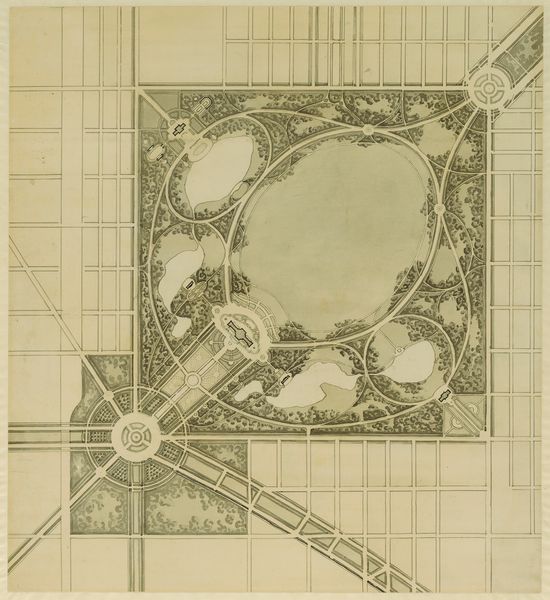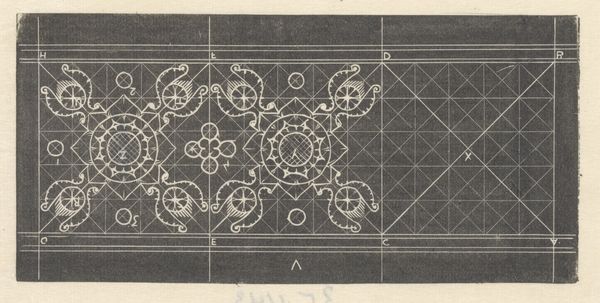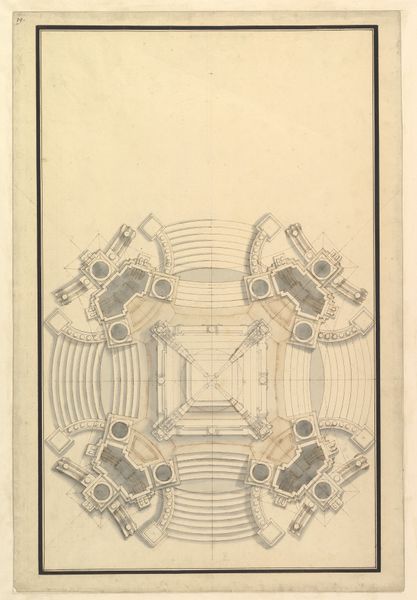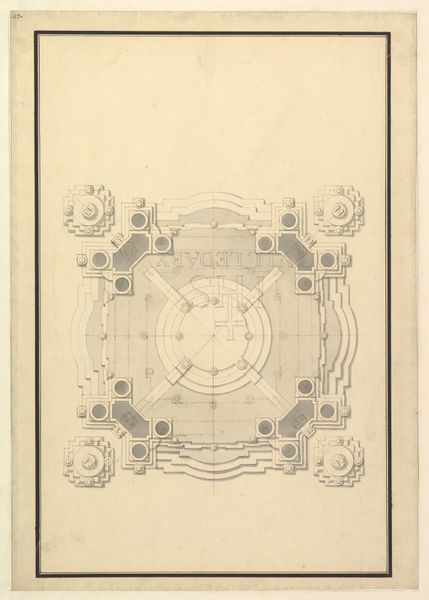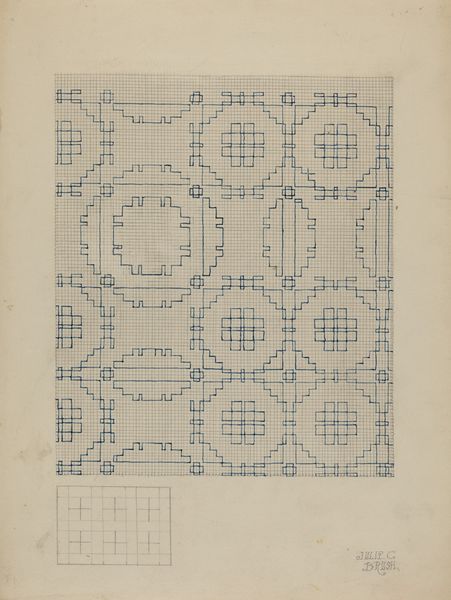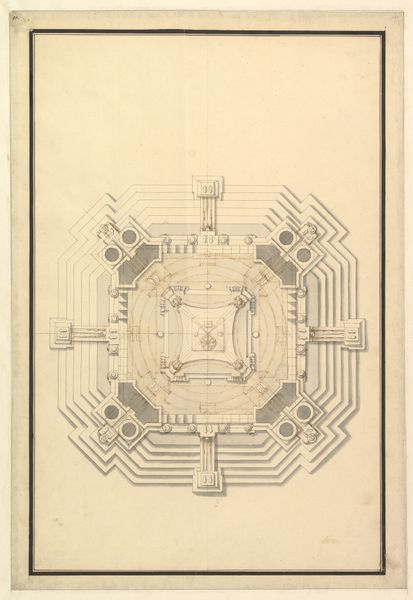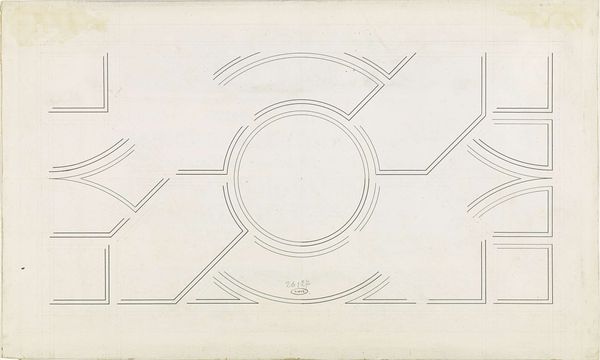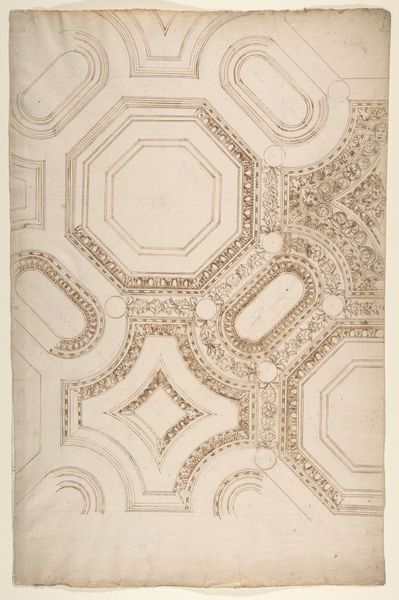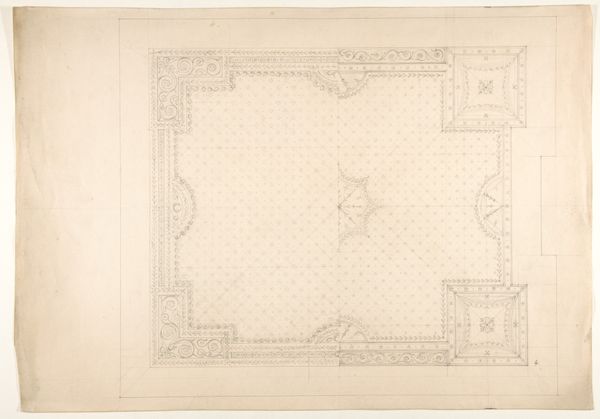
Ground Plan for Catafalque for Johann Wilhelm, Count Palatine of the Rhine (d. 1716). 1711 - 1721
0:00
0:00
drawing, print, etching, architecture
#
drawing
#
baroque
# print
#
etching
#
etching
#
form
#
geometric
#
line
#
history-painting
#
architecture
Dimensions: 19-1/4 x 12-13/16 in. (48.9 x 32.5 cm)
Copyright: Public Domain
Editor: Here we have “Ground Plan for Catafalque for Johann Wilhelm, Count Palatine of the Rhine,” an etching by Giuseppe Galli Bibiena, made sometime between 1711 and 1721. It looks so precise and architectural… almost like a blueprint. What catches your eye about this piece? Curator: It's less a blueprint, and more like a fever dream, isn’t it? So precise, yes, but also wildly impractical! These Bibiena fellas, Giuseppe and his family, they were the masters of illusion. They didn't just design buildings; they dreamt up these baroque spectacles that were meant to overwhelm you. Think Versailles on steroids, or better yet, think of the best Burning Man structure someone like Da Vinci would create. Now, knowing it's for a catafalque, a temporary structure for a funeral, it takes on this fleeting, melancholic quality. What kind of message do you think it conveys? Editor: Hmm, fleeting is a great word. I guess it makes sense that it's temporary, given the medium of printmaking too. Is it meant to make death less scary? Curator: Perhaps! Or maybe to turn death into a grand show, a theatrical event where grief becomes performative. This print would have served to memorialize that ephemeral experience, to keep the memory of the spectacle and the deceased alive, however artificially. The real piece only lasted for the funeral services and would disappear, much like our lives will, until its essence gets trapped on paper like this. Do you feel any sense of that mortality here? Editor: I do, actually. It's a little sad and profound once you put it that way. I came in thinking "geometry," and now I see a stage for… well, everything. Curator: Exactly! A stage for life, death, and the elaborate dance in between. And perhaps, that’s the best lesson to find when viewing art, never be afraid of what emotions and thoughts will bubble to the surface.
Comments
No comments
Be the first to comment and join the conversation on the ultimate creative platform.
